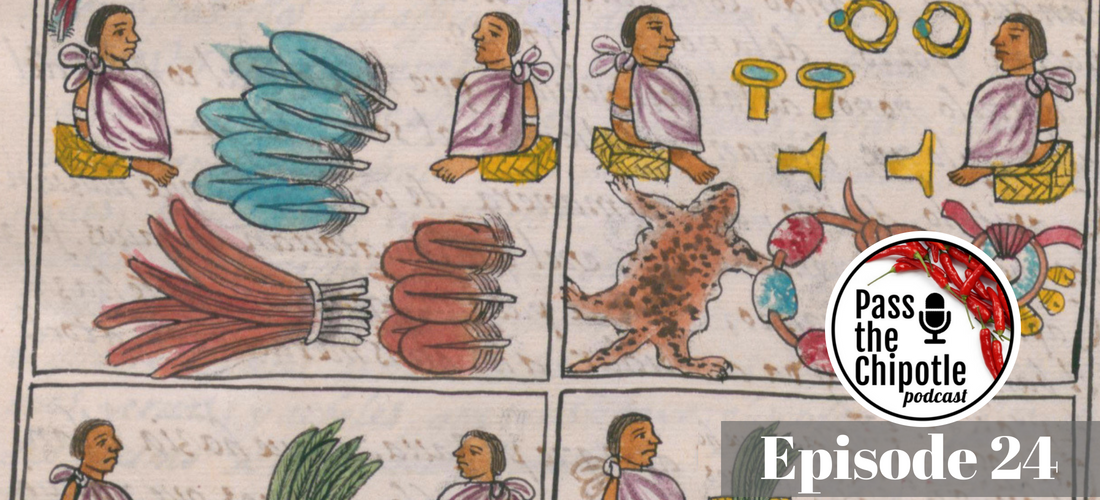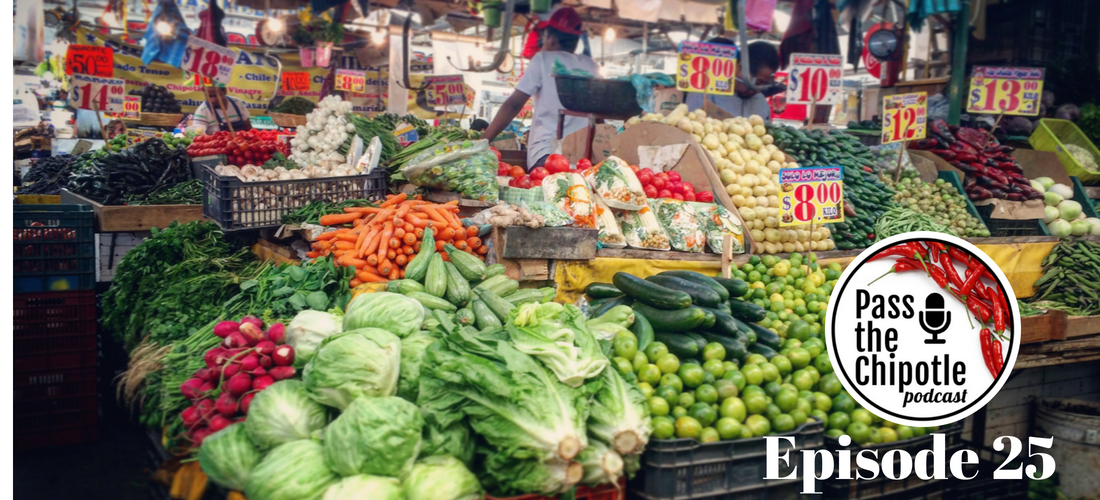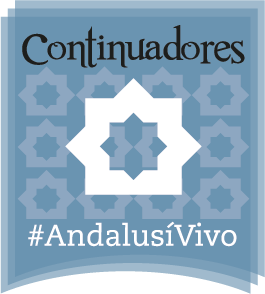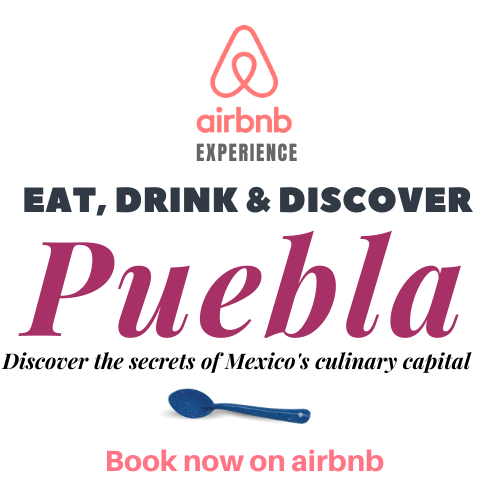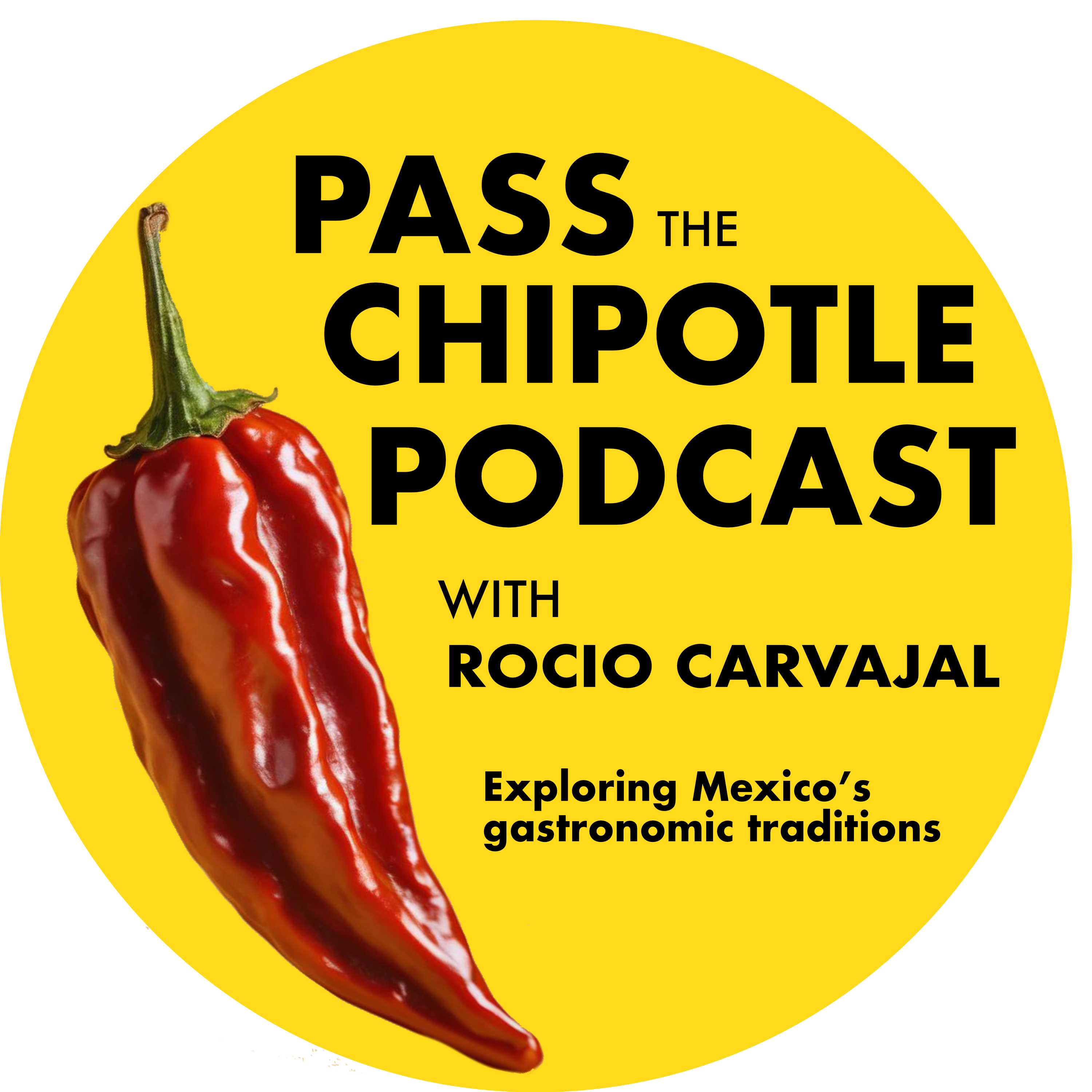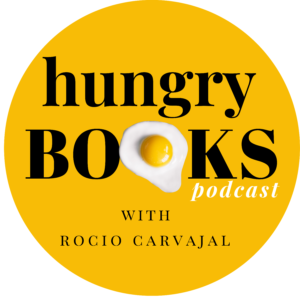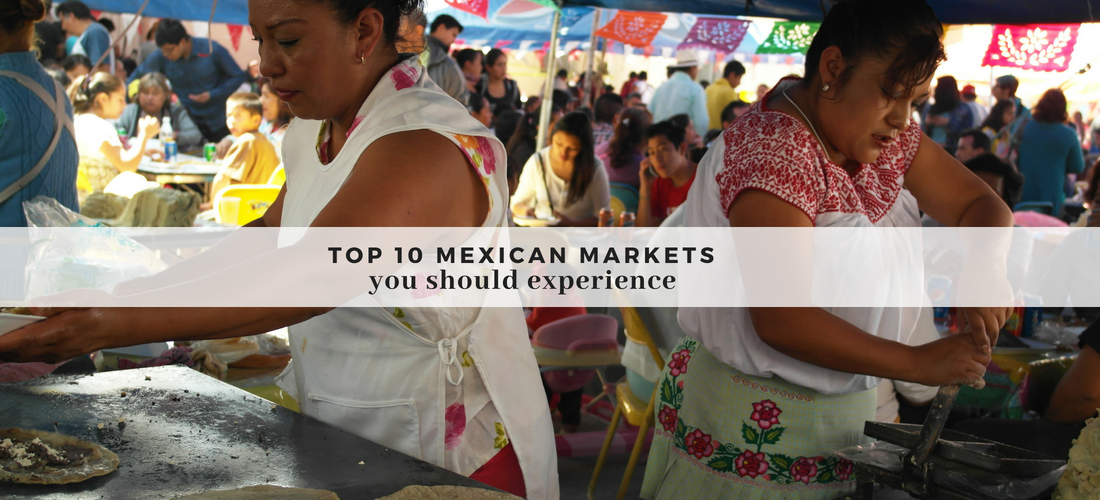
top 10 Mexican markets you should experience
Mexico has 32 states and 2464 cities so is next to impossible to list every existing market, which is why I selected a few noteworthy, fascinating and unique markets, this list reflects my own analysis, experience and opinion, read to find out why I find them so unique and interesting.
Listen to the History of Mexican markets on Pass the Chipotle Podcast episodes 24 and 25:

The floating allotments of Xochimilco are part of UNESCO’s Food and Agriculture Organisation list of Globally Important Agricultural Heritage Systems. It is a wonder in itself that these allotments were once the powerhouse of the Aztec capital.
Over the centuries Xochimilco has been at the brink of extinction due to pollution, abandonment and over exploitation, but the organised local community with the help of experts have slowly transformed it into a more environmentally and economically sustainable project.
The traditional tourist attraction is a tour on board of the beautifully decorated boats called trainers that glide along the ancient canals while visitors enjoy an array of food and music bands that come and go.
But is truly worth a visit to the actual allotments, interact with local farmers and understand more about this living time capsule, living relic of the pre columbian world.
Click HERE to locate this market on a map.

Anyone who has visited Mexico City or DF and used the metro system which is the under and over ground transport network will find it makes navigating this mega metropolis very easy.
The Market of La Merced is one of the most diverse and accessible Markets within the confinements of the city. When traveling the pink metro line one can literally smell La Merced a few stations before.
Visiting this market guarantees a memorable experience, understandably as a tourist you won’t be able to buy produce to take home and cook but you can all the same enjoy the plentiful displays of tantalising fruits and vegetables, as well as enjoying a hearty and cheap meal at the many eateries and food stalls.
Click HERE to locate this market on a map.

This is a very singular market of Mexico city, its speciality isn’t food but hundreds of herbal and less conventional remedies that are part of the rich culture of shamanism and spiritual healers that exist since pre columbian times.
In spite of being a deeply catholic country, Mexicans navigate very comfortably through ritualistic practices such as spiritual cleanses, protection against the evil eye and guidance from clairvoyants. For those looking for a shortcut to their dreams, the market of Sonora might provide the right love spell, potion, lotion, amulet, and even call for the blessings of saints, angels and why not, if the case requires it, even the holy death.
Click HERE to locate this market on a map.

The Market of Jamaica in Mexico City is famous for its huge variety of flowers around 5000 according to official records. This market also has a remarkable food section. The history of this market is directly liked to the pre columbian period when this area was part of the system of lakes that conformed the Mexica capital, honouring its long tradition of trade and agriculture, this market is a gem and a true enjoyment for the senses. Unless you suffer form pollen allergies!
Click HERE to locate this market on a map.

Less than an hour way from the city of Oaxaca, the town of Tlacolula de Matamoros is home of one of the most famous Sunday markets of the region that bring together sellers and buyers form the surrounding valleys. The crowded streets are totally occupied by more than 1400 stalls according to official records. The products sold include seeds, produce, meats, pottery, wool, bread, carpets, clothes, kitchenware and even livestock.
The food section is particularly well stocked and it is in and of itself a great attraction for visitors who flock to enjoy the delicious and affordable treats they offer. Many people, specially women dress with their traditional costumes and one can often hear them speak Zapotec and Mixe, two of the most common languages of the region.
Click HERE to locate this market on a map.

Just in case you thought Mexicans were used to all kinds of weird and wonderful foods, there is a handful of speciality markets where unusual meats like crocodile, lion, ostrich, wild boar, deer, armadillo, snake, skunk and even iguana can be found. The Market of San Juan in her heart of Mexico City has specialised in gourmet products that also include cured meats, cheeses and mushrooms among other things. Many restaurants and earnest home cooks source ingredients from San Juan but you can certainly eat some interesting tacos there.
Click HERE to locate this market on a map.

This 2000+ year old city has a long history of trade, and less than 150 years ago it was a thriving industrial hub with many textile factories and wheat mills. Dubbed as “the city of the eternal spring” Atlixco has an enviable semitropical climate, abundance of underground rivers, springs and streams and is framed by the iconic view of the Popocatepetl and iztaccihuatl volcanoes.
Its famous covered market is famous for its may eateries, but specially for the irresistible Market tacos or tacos placeros, what makes it really unique is the fact that as you walk you can choose different cuts of meats and they are cooked from right on the spot, while you take sit in the communal tables you can purchase salads, salsas, cheeses, tortillas, refreshers and all sorts of trimmings to make your own tacos, everything sourced by the plethora of sellers that complement each other perfectly, no fancy salad bar or buffet can dream to rival this wonderful ecosystem.
Click HERE to locate this market on a map.

Cholula prides itself of being the oldest city of all Mesoamerica, with more than 2000 years of urban and agricultural tradition, this place knows a thing or two about markets. At the golden age of the Aztec empire, Cholula in the nearby state of Puebla was the financial and diplomatic centre of its time, its famous markets often outshone those of Tenochtitlan the Mexica capital.
Today the municipal market offers a true cornucopia of produce, crafts, food for all kinds of cravings and its unmissable Gorditas and quesadillas made with blue corn masa.
You can find side by side modern products like sweets, clothes and tools as well as traditional home and kitchenware like grinding stones, metates and molcajetes, tortilla presses, spices and medicinal herbs.
Click HERE to locate this market on a map.

Mexico city’s biggest wholesale market, otherwise known as Central de abastos sources alone 80% of the total of fruits and vegetables that the capital consumes on a daily basis.
Located in the working class district of Iztapalapa, the construction of this impressive market started in 1981 which makes it younger than me, it has 1934 stalls of fruit and vegetables alone and 1222 stalls of groceries, ready made food and other products and services distributed in 8 buildings. It has its own transport system, and parking areas that are just big enough to fit the nearly 1000 working vehicles like trailers and trucks that come and go. Besides this, there is a daily influx of approximately 55 thousand vehicles that source nearly 30 thousand tons of produce and groceries.
This is definitely not your average trip to the Tesco express or your nearest Walmart, it is a true immersive and life changing experience.
Click HERE to locate this market on a map.

Cuetzalan del Progreso is a rural community at the heart of the semitropical northern mountains of the state of Puebla in central Mexico where More than half of the population is bilingual, and speak Spanish and Nahuatl. This world famous market takes place every Saturday and Sunday and the little town’s streets are overtaken by hundreds of stalls where crafts, produce, clothes, tools and food are sold.
This is one of the many coffee producing regions of Mexico and as you walk you can smell waves of the intense deep aroma of freshly ground coffee, and as you explore the steep cobbled streets you feel suddenly enveloped by the thick smell of vanilla, allspice, chilies, and a huge variety of fruits and vegetables that are sold.
Eating right at the market offers a unique opportunity to see traditional cooks prepare and serve the many local treats like tlayoyos, a corn dough dumpling filled with broad bean paste, topped with salsas, onion, cheese and cream.
Experiencing this market is an opportunity to have a glimpse into the intimate life of indigenous communities, the grace and dignity with which they hold on to their traditions and the patience and friendliness with which they welcome visitors.
Click HERE to locate this market on a map.


